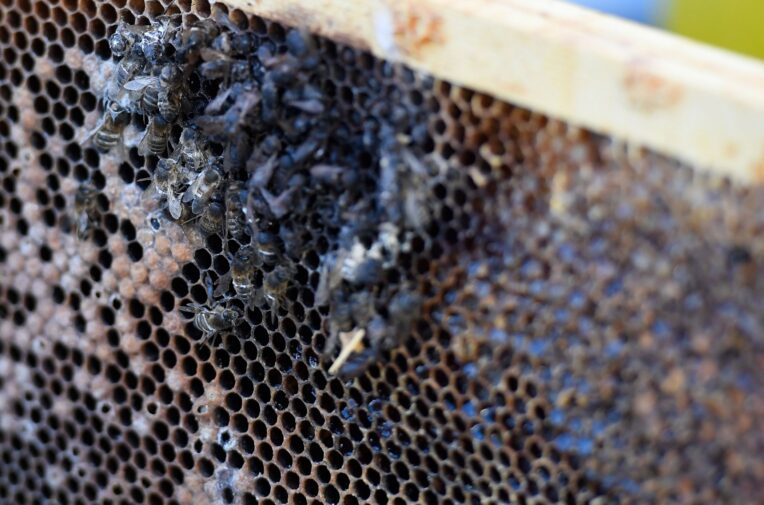
Dead bees displayed by beekeepers during a demonstration against neonicotinoids in Rennes, western France, 2018. Photo: Damien Meyer/AFP via Getty
Revealed: Europe and the UK’s vast shipments of banned, bee-killing ‘neonics’
New investigation uncovers the EU’s exports to the global South of chemicals it has branded a ‘serious’ threat to world pollinator populations
Revealed: Europe and the UK’s vast shipments of banned, bee-killing ‘neonics’
New investigation uncovers the EU’s exports to the global South of chemicals it has branded a ‘serious’ threat to world pollinator populations
Dead bees displayed by beekeepers during a demonstration against neonicotinoids in Rennes, western France, 2018. Photo: Damien Meyer/AFP via Getty
The European Union and the UK are shipping thousands of tonnes of ‘neonicotinoid’ pesticides to poorer countries, years after banning the chemicals from their own farms to protect bees, a new Unearthed and Public Eye investigation has found.
Documents obtained under freedom of information rules show that, over just four months last autumn, EU member states and the UK issued plans to export more than 3,800 tonnes of banned insecticides containing the ingredients thiamethoxam, imidacloprid or clothianidin.
These neonicotinoid pesticides, or ‘neonics’, have been banned from the EU’s and the UK’s fields since 2018, in response to burgeoning scientific evidence of the harm they can do to the bees we depend upon to pollinate crops and maintain biodiversity.
The European Commission considers this threat to global pollinator populations so grave it is now taking steps to ban the import into the EU of foods containing any trace of some neonics.
As neonicotinoids cannot be safely used in the EU, it is evident these hazardous pesticides cannot be safely used in poor countries
However, as Unearthed and Public Eye’s investigation reveals for the first time, EU member states continue to export vast quantities of these same chemicals overseas – particularly to poorer countries, where experts believe hazardous pesticides pose the greatest risks.
Responding to the findings, the United Nations’ special rapporteur on toxics, Marcos Orellana, told Unearthed and Public Eye that these EU exports were “a form of human exploitation” that “exacerbates environmental injustice and discrimination”.
More than 90% of the banned neonic shipments notified for export between 1 September and 31 December 2020 were destined for low- or middle-income countries (LMICs) like Brazil, Ukraine, Mali or Pakistan.
From Belgium to Brazil
Brazil – a country that hosts up to 20% of the world’s remaining biodiversity – was the intended destination for almost half the total weight of the EU’s exports of banned neonic chemicals.
This was driven by an enormous planned shipment from Belgium of 2.2 million litres of the pesticide giant Syngenta’s insecticide Engeo Pleno S – enough to spray the entire surface area of Belgium several times over.
But while Syngenta notified the bulk of the exports of banned neonics in this period, the investigation revealed more than half a dozen other companies involved in the European export trade.
Exports were notified from eight different EU countries and the UK, and destined for more than sixty countries around the world – the vast majority of them poorer countries.
Full data for the investigation is available here
“As neonicotinoids cannot be safely used in the EU, which has much greater capacities for control than those available in developing countries, then it is evident that these hazardous pesticides cannot be safely used in poor countries,” Professor Orellana told Unearthed and Public Eye.
He added that the UN Human Rights Council had now recognised “everyone is entitled to the right to a safe, clean, healthy and sustainable environment”. Pesticides were a “serious source of pollution that aggravates the toxification of our planet and the loss of biodiversity and essential ecosystem services, including the essential pollination functions of bees.”
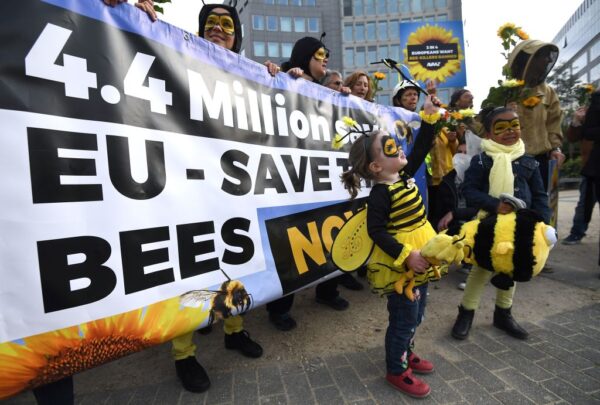
The revelations are likely to prompt renewed calls for the European Commission to follow through on its commitment to end the manufacture for export of chemicals that are banned from use in the EU.
The Commission made this surprise commitment a year ago after a previous Unearthed and Public Eye investigation revealed the scale of the EU’s exports of older-generation banned pesticides such as atrazine and paraquat.
Despite this, it has said is still “considering the options” for how to put an end to these exports, and does not expect to have a concrete proposal for changing the law before 2023.
This is a blatant disregard of the crisis we are facing in terms of biodiversity loss
When Unearthed and Public Eye shared the findings of our latest investigation with Belgium’s climate and environment minister, Zakia Khattabi, she said safety and sustainability did “not stop at the EU’s borders” and Belgium fully supported the Commission’s ambition to end banned chemical exports.
In the meantime, she added, “at Belgium level, I have asked my administration to draw up an inventory of exports of banned chemicals and to launch a study to identify all the legal levers available to deal with the issue.”
France, the second-biggest exporter of banned neonics after Belgium, has already passed a landmark national law prohibiting banned-pesticide exports, which will take effect at the start of next year.
However, other exporting countries have shown less enthusiasm for a legal crackdown.
The UK, which since the start of this year has completely separated from the EU’s pesticide export regime, has so far given no indication that it intends to follow Europe’s lead on ending banned pesticide exports.
In late 2020, the pesticide company NuFarm notified exports from the UK of 42 tonnes of insecticides containing the banned neonic imidacloprid, destined for countries including Ukraine, Belarus, Russia, Tunisia and Sudan.
Companies exporting these chemicals told Unearthed and Public Eye that their products were safe if used according to the label, and were all approved for use by the countries that imported them.
A spokesman for the German pesticide giant Bayer – the company with the most banned neonic exports after Syngenta – said: “The mere fact that a plant protection product is not authorised or [is] banned in the EU says nothing about its safety.
“Many other regulatory agencies around the world also have very reliable, robust, carefully working and sophisticated regulatory systems in place.”
But pesticides campaigners in importing countries rejected these claims. Layla Liebetrau, project lead for Kenya’s Route to Food Initiative, which campaigns for the right to food, said the impact of neonics on pollinators was “a threat to food production and therefore a threat to food security” in Kenya.
She told Unearthed: “On the part of exporting countries, I think this is a violation of universally accepted human rights and a blatant disregard of the crisis we are facing in terms of biodiversity loss.
“On the part of importing countries, it reinforces the truth that many developing countries do not have sophisticated systems to evaluate the risks of individual pesticides and the capacity to make informed decisions. There is an ethical issue, and it doesn’t have borders.”
Africa represents a small, but growing, part of the world’s pesticide market, and there is less research available about the effects of agrochemicals in African environments than in Europe or North America.
However, farmers in both Kenya and Ghana – two of the 21 African countries to which the EU exports banned neonics – have recently reported having to pollinate crops by hand because of a decline in insects linked to pesticide use.
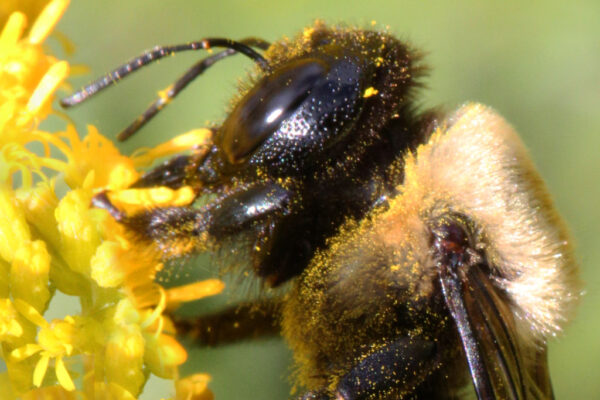
‘Novichok for bees’
Syngenta and Bayer – the main companies exporting banned neonics out of Europe – both insist their products are safe for pollinators if used “as intended”.
A Syngenta spokesman said: “Since pollinators play a vital role in maintaining a healthy and productive agricultural system, we all have a vested interest in protecting their health. We fully stand by the safety and effectiveness of thiamethoxam.”
A spokesman for Bayer – which manufactures products containing both imidacloprid and clothianidin – added that while “Bayer is accepting the EU decision to discontinue the approval of neonics, we would like to highlight that regulators worldwide have reconfirmed the safe use of these products after diligent review”.
We are simply exporting most of our environmental damage to the developing world
However, University of Sussex professor of biology Dave Goulson, an expert in the ecology and conservation of insects, told Unearthed and Public Eye: “The toxicity of neonicotinoids to all insects cannot be exaggerated – they are the equivalent of novichok for bees.
“They can persist for years in soil and in woody plants, poisoning anything that tries to eat them or to collect nectar from their flowers. They also leach into streams and harm aquatic life.”
Professor Goulson, who is a trustee of the Pesticide Action Network campaign group, said the “collateral damage” from spraying these “potent and persistent pesticides” in a country like Brazil, which “teems with biodiversity” will be “vast”.
He added that much of the food produced by this agriculture, such as soya, was destined to be exported to Europe and the UK for use as animal feed: “We are simply exporting most of our environmental damage to the developing world.”
Within the EU, the use of these neonics on crops that are attractive to bees has been banned since 2013, after EU experts identified “high acute risks” for the insects from “contaminated pollen and nectar”. In early 2018, the EU agreed a total ban on outdoor use, after the European Food Safety Authority concluded that any outdoor use of the chemicals posed high risks to bees.
The EU ban was a global landmark, cited by the World Health Organisation (WHO) and the Food and Agriculture Organisation of the United Nations (FAO) as evidence of a growing consensus on the need to “severely restrict” the use of neonics and “prevent future registration” of the chemicals due to the “high hazard they pose to the environment”.
There was, the UN agencies wrote, a “rapidly growing body of evidence” which strongly suggests that “existing levels of environmental contamination” by neonics were “causing large-scale adverse effects on bees and other beneficial insects”.
We would not find it acceptable that the production of food for import into the EU poses a threat of serious adverse effects on pollinator populations at global level
Three out of every four crops depend on pollinating insects. The FAO has warned that pollinator populations are on the decline in many parts of the world – driven largely by intensive farming practices like agrochemical use, and posing a global threat to food security.
The European Commission considers this threat so serious it intends to impose an effective ban on the import of foods grown with thiamethoxam or clothianidin.
In October, the Commission’s directorate for Health and Food Safety (DG SANTE) told Public Eye and Unearthed it would soon draft a regulation to reduce the “maximum residue limits” for these neonics on imported foods to “technical zero”.
Klaus Berend, the head of the directorate’s pesticides and biocides unit, explained: “Environmental issues of global relevance transcend national boundaries and cannot be effectively tackled by measures applied only within the EU territory.
“For example, we know from the assessments in the EU that some active substances in the group of neonicotinoids are particularly toxic for bees and contribute significantly to the decline in pollinator populations.
“This is also the case when they are used outside the EU borders and we would not find it acceptable that the production of food for import into the EU leads to or poses a threat of serious adverse effects on pollinator populations at global level.”
He added that similar action “on other neonicotinoid substances might follow in the future.”
What's killing millions of bees in Brazil? Video by Sofia Perpétua, Lucy Jordan and Georgie Johnson, 2020
The Rotterdam convention
Despite this, it will be years before the Commission can say how it intends to close the loophole that allows companies to ship banned pesticides out of the EU.
In October last year, the Commission adopted a chemical strategy which promised to “ensure that hazardous chemicals banned in the European Union are not produced for export, including by amending relevant legislation if and as needed.”
However, it does not intend to bring forward a concrete proposal for reform before 2023.
Asked by Unearthed and Public Eye if this proposal – when it comes – will end the export of banned neonics, a European Commission source said it was “premature to determine which chemicals may fall under any measure that may be taken” because the Commission was still assessing which measures were “the most appropriate ones”.
In the meantime, one of the few restrictions placed on companies shipping banned pesticides out of Europe is the EU’s commitment to the Rotterdam Convention. Under this UN convention, an exporting country must give prior warning to its counterparts in an importing country if it intends to ship pesticides which are banned or severely restricted on its own farms.
The EU’s banned neonic exports became subject to these rules for the first time on 1 September last year. This meant companies had to produce “export notifications” for any of these products they wanted to ship out of the EU during the final four months of 2020.
For just that short period, companies across the EU and the UK issued 299 different “export notifications” for planned shipments of banned, outdoor-use neonic products.
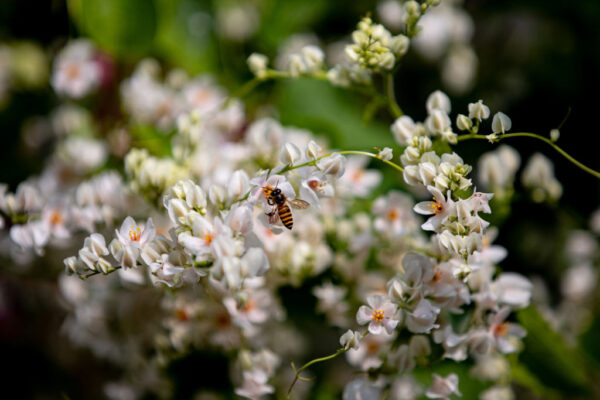
Over six months, Unearthed and Public Eye – an NGO that investigates human rights abuses by Swiss companies – managed to obtain all of these documents, using freedom of information requests to the European Chemicals Agency.
Export notifications are not a perfect record – they are estimates issued before a shipment takes place. The actual amount a company ships may be greater or less than was declared on the paperwork – and in some cases the export will not take place at all.
However, taken together, they are the most detailed map available of Europe and the UK’s trade in banned agrochemicals.
The investigation found:
- For the period 1 September to 31 December 2020, EU member states issued plans to export 3,859 tonnes of banned neonicotinoid-based products;
- In total, these planned exports contained 702 tonnes of the active ingredients thiamethoxam, imidacloprid or clothianidin;
- Because the notifications covered only a third of 2020, the EU’s full annual exports of banned neonicotinoids are likely to be much greater;
- The shipments were destined for 65 different countries, of which 52 (80%) were low- or middle income countries (LMICs);
- The top 10 destinations for the EU’s banned neonic exports, by weight of active ingredient, were Brazil, Russia, Ukraine, Argentina, Iran, South Africa, Singapore, Indonesia, Ghana and Mali – of these only Singapore is classed as a high-income country;
- Among EU and UK countries, nine were involved in the export of banned neonic products. The biggest exporters by weight of active ingredients were Belgium, France and Germany, followed by Spain, Greece, the UK, Denmark, Austria and Hungary;
- The Swiss-headquartered, Chinese-owned pesticides multinational Syngenta was by far the biggest exporter of banned neonics out of Europe; the company issued export notifications for 3,426 tonnes of banned pesticide products, containing 551 tonnes of thiamethoxam;
- It was followed by its German counterpart Bayer, which issued 119 different export notifications for 138 tonnes of banned products, containing 60 tonnes of imidacloprid or clothianidin;
- Other pesticide multinationals that notified multiple exports of banned neonics out of the EU or the UK last autumn included Germany’s BASF, the Australian company NuFarm, and India’s UPL;
- A NuFarm subsidiary notified exports of 42 tonnes of banned products out of its site near Bradford, in the north of England, containing 16.3 tonnes of imidacloprid – all of these exports were destined for LMICs in Eastern Europe or Africa.
While some exporting countries – like France and Belgium – told Unearthed and Public Eye they strongly supported an EU-wide ban on these, others, including Germany and Hungary, declined to say whether or not they would support the measure.
A spokesman for the German environment ministry said the German government “welcomes the announcement of the European Commission to address the issue of exporting chemicals being banned in the EU, and that we are looking forward to concrete proposals to be made by the Commission”.
But he added: “However, with respect to the ongoing deliberations in finding a common approach in the EU and its member states, we beg your respect for not going into further details at this point in time.”
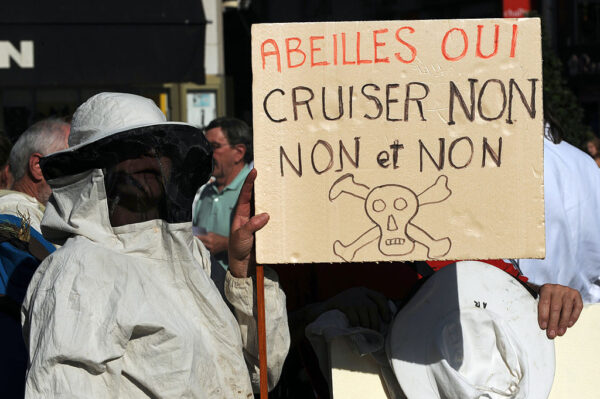
A spokesman for Hungary’s agriculture ministry said it would “form an opinion on a general ban on the production of unauthorised chemicals for export only after consulting the planned detailed rules and carrying out economic and environmental impact assessments at EU level”.
Meanwhile, in the UK, a spokeswoman for the department for environment, food and rural affairs told Unearthed and Public Eye: “The government takes its international commitments to environmental protection very seriously and, in the case of neonicotinoids and other chemicals, the UK goes above the international standard, requiring exporting companies to confirm with countries that they have accepted any imports before they are shipped.”
A NuFarm spokesman added: “We operate a global supply chain that supports our presence in multiple markets with different regulatory regimes. Nufarm has manufacturing facilities in Europe, the United Kingdom, Australia, the United States of America, Malaysia, and Indonesia supplying customers predominantly in Europe, the Americas and Asia Pacific.
“Imidacloprid is exported via our entities in France, the UK and Austria to various Nufarm operations. All our products comply with the registration requirements of the jurisdictions into which they are sold.”
A BASF spokeswoman said: “There are vast differences in crops, soil, climate, pests and farming practices around the world. We tailor our products for specific regional markets.”
She added: “All clothianidin based BASF products are used as seed treatment. Especially seed treatments present an effective measure to reduce the contact of an insecticide with pollinators and thus reduce risk of exposure.”
It took Unearthed and Public Eye around six months to collect all of the “export notifications” used in this investigation, using freedom of information requests. We obtained this data from the European Chemicals Agency (ECHA), which acts as a kind of clearing house for these notifications in the EU, collecting them from national regulators and sending them to destination countries. (Until the end of 2020, it also continued to provide this role for the United Kingdom, under the terms of the Brexit transition deal.)
Through these requests, we sought to obtain a complete set of all export notifications issued in 2020 for pesticides containing the banned neonicotinoids imidacloprid, thiamethoxam, or clothianidin. These chemicals only became subject to the EU’s “prior informed consent” regulation (which imposes the need for export notifications) on 1 September 2020, so the documents we obtained only covered four months’ worth of exports (from 1 September to 31 December 2020.) We were only interested in pesticides that were being exported for purposes that are banned within the EU, which in the case of neonicotinoids means basically all outdoor uses. We therefore asked ECHA to exclude any exports that were explicitly non-agricultural (e.g. bait traps for indoor use.) Once we obtained the data we also checked it and excluded any exports that we concluded were for indoor or veterinary uses.
The full dataset used for the investigation is available here.
Export notifications are – by definition – estimates that are issued prior to the product being shipped, so they are not a perfect record. The actual quantities exported may end up being greater or less than estimated, and some notified exports do not take place in a given year.
All countries and companies in our dataset were given an opportunity to review and comment on our findings. The majority declined to comment precisely on numbers, however a few did indicate cases where either specific exports, or the overall volume of exports, was greater or less than planned. The Spanish government told Unearthed and Public Eye that the total weight of banned neonicotinoids it exported under the PIC regulation in 2020 was 82.7 tonnes, slightly higher than the 78.5 tonnes declared in the Spanish export notifications we obtained. Denmark notified only one neonic export in this period – a shipment to Israel of 20 tonnes of a product containing 7.2 tonnes of imidacloprid; however, the Danish environment ministry told us that the actual amount of imidacloprid shipped under this notification was lower, at 2.6 tonnes.
The French government provided Unearthed and Public Eye with details of the actual quantities of banned neonics exported from France by two of the five companies that issued French notifications (these companies were Sumitomo Chemical and Bayer, the only two exporters out of France who agreed to provide this data.) The data shows that the actual quantity of banned neonics shipped from France by Bayer subsidiaries was significantly greater than the amount declared on the export notifications (43.1 tonnes of neonic active ingredients, compared with 5.9 tonnes declared on the export notifications). However, it also shows that a number of individual exports notified by Bayer from France were not ultimately shipped in 2020.
Sumitomo Chemical had one export notification in our dataset: an export from France to Ukraine by the company Sumitomo Chemical of 10 tonnes of a product containing clothianidin. The company has informed Unearthed and Public Eye via the French government that this export was not ultimately shipped.
In addition to the above, the pesticide company NuFarm has flagged that one notified export from Austria to North Macedonia of 2,000 litres of the company’s imidacloprid product “Imidor 20 SL” was not shipped.
In all instances where companies or countries have informed us of a variation between notified and actual exports, the information is recorded in the accompanying dataset. All headline figures given in this investigation are taken from the export notifications themselves, to allow like-for-like comparison across companies and countries.

